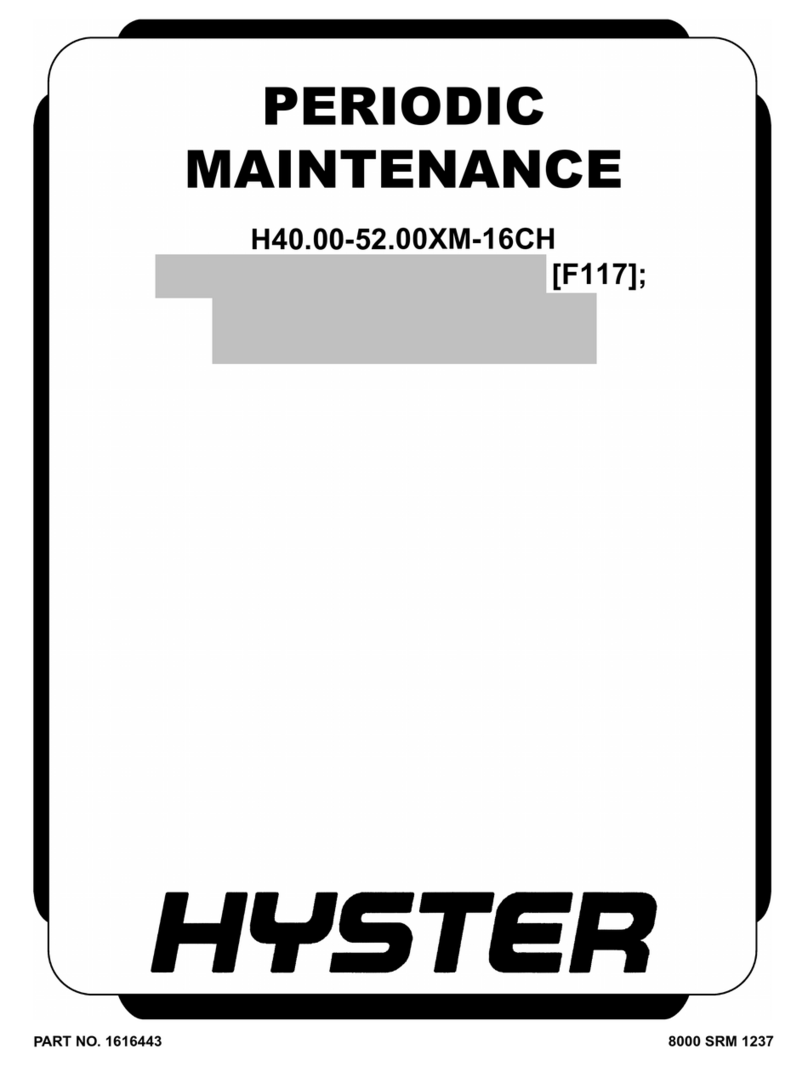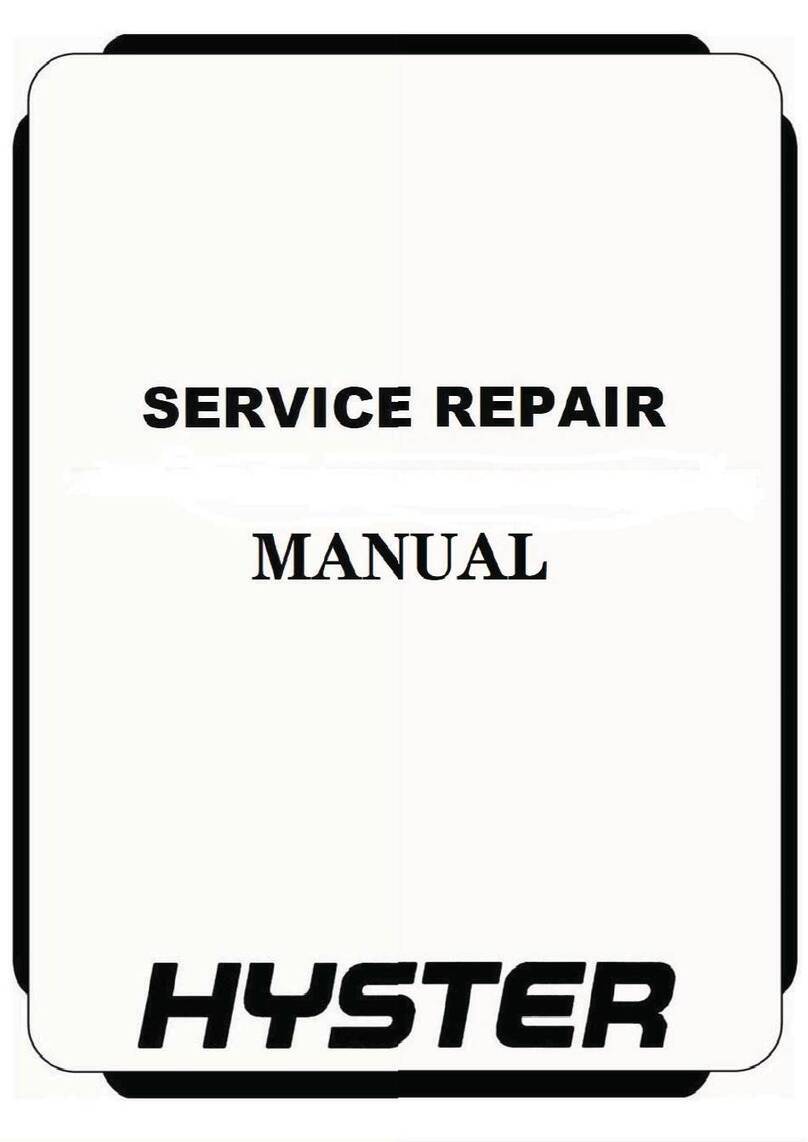
Free-Lift Cylinder Repair 4000 SRM 481
CAUTION
A difficult and important step in assembling
cylinders is the correct installation of the seals
without damage. Most cylinder maintenance is
caused by seal leakage. Special tools are avail-
able in the seal kit for correct installation of
the seals.
3. Carefully push the piston and piston rod into the
shell. Release the clamp on the seal when the
seal travels past the threads of the shell.
4. Install the seals, O-rings, and wiper ring in the
retainer. If the wiper ring has a spring backup
ring, the spring must be toward the base of the
lift cylinder.
5. Carefully install the retainer on the piston rod.
6. Engage the threads and tighten the retainer in
the shell to 340 to 410 N•m (251 to 302 lbf ft).
Use the correct spanner wrench. DO NOT hit
the retainer with a hammer and driver.
CAUTION
Wrong installation of the special washer and
spring can make the load lower too fast.
7. Install the lowering control valve. Make sure the
special washer and the spring are installed cor-
rectly. A wrong installation can cause the load to
lower too fast.
8. See the section Mast,Repair 4000 SRM 482 for
cylinder installation in the mast assembly.
Free-Lift Cylinder Repair
DISASSEMBLE
NOTE: To disassemble and repair a cylinder, the
cylinder must be removed from the mast assembly.
See the section Mast,Repair 4000 SRM 482 to
remove the cylinder from the mast assembly.
WARNING
Use slings and a crane to handle and disassem-
ble the lift cylinders of most lift trucks. Make
sure that the crane and slings can lift the load
correctly.
CAUTION
Carefully disassemble and assemble the lift
cylinders in a clean area so that the piston
rods and sliding surfaces are not damaged.
1. Loosen the retainer with a spanner. Remove the
retainer from the shell. See Figure 5.
2. Remove the protective cap from the inlet and
slide the rod and piston assembly from the shell.
Drain the hydraulic oil into a container.
3. Remove the retainer from the piston rod. Re-
move and discard all O-rings, seals, and bear-
ings.
4. Remove the internal check valve plugs and balls
from thebaseoftherod.
5. Clean all the parts. Check the sliding surfaces
for damage. Repair or replace any damaged
parts.
ASSEMBLE
NOTE: Inspect the piston rod surface for scratches.
Check the area of the rod where the wiper ring con-
tacts the rod. If scratches are found, use a piece
of crocus cloth to polish the rod. DO NOT polish
lengthwise; use a rotary motion. After the scratch
or scratches have been removed, use another piece
of fine crocus cloth with oil on it to polish the rod.
Use a rotary motion to polish the rod until the finish
is free of scratches and has a fine finish. Clean rod
thoroughly to remove any metal shavings, before as-
sembly.
NOTE:
•Useasealkittoreplacetheseals. Usetheinstal-
lation sleeves included in the kit. See Figure 4.
•Lubricate all internal parts of the lift cylinder with
hydraulic oil during assembly.
•Use new O-rings, seals, and bearings. Apply appro-
priate lubricant (hydraulic oil) during assembly.
•Make sure the seal assemblies are installed with
the"open"endtowardthebaseoftheliftcylinder.
6
































